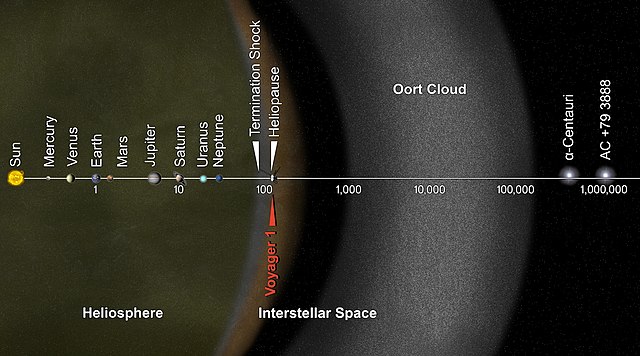Top Qs
Timeline
Chat
Perspective
Whipple (spacecraft)
Observatory for Oort Cloud objects From Wikipedia, the free encyclopedia
Remove ads
Whipple was a proposed space observatory in the NASA Discovery Program.[1] The observatory would try to search for objects in the Kuiper belt and the theorized Oort cloud by conducting blind occultation observations.[2] Although the Oort cloud was hypothesized in the 1950s, it has not yet been directly observed.[2] The mission would attempt to detect Oort cloud objects by scanning for brief moments where the objects would block the light of background stars.[2]




In 2011, three finalists were selected for the 2016 Discovery Program, and Whipple was not among them, but it was awarded funding to continue its technological development efforts.[3]
Remove ads
Description
Summarize
Perspective
Whipple would orbit in a halo orbit around the Earth–Sun L2 and have a photometer that would try to detect Oort cloud and Kuiper belt objects (KBOs) by recording their transits of distant stars.[1] It would be designed to detect objects out to 10000 AU.[1] Some of the mission goals included directly detecting the Oort cloud for the first time and determining the outer limit of the Kuiper belt.[1] Whipple would be designed to detect objects as small as a kilometer (half a mile) across at a distance of 3,200 billion kilometers; 22,000 astronomical units (2×1012 mi).[4] Its telescope would need a relatively wide field of view and fast recording cadence to capture transits that may last only seconds.[5]
In 2011, Whipple was one of three proposals to win a technology development award in a Discovery Program selection.[4] The design proposed was a catadioptric Cassegrain telescope with a 77-centimeter aperture (30.3 inches).[6] It would have a wide field of view with a fast read-out CMOS detector to achieve the desired time and photometric sensitivity.[7]
The smallest KBO yet detected was discovered in 2009 by poring over data from the Hubble Space Telescope's fine guidance sensors.[8] Astronomers detected a transit of an object against a distant star, which, based on the duration and amount of dimming, was calculated to be a KBO about 1,000 meters (3,200 ft) in diameter.[8] It has been suggested that the Kepler space telescope may be able to detect objects in the Oort cloud by their occultation of background stars.[9]
Remove ads
See also
- Fred Lawrence Whipple Observatory
- List of proposed space observatories
- List of Solar System objects most distant from the Sun
- List of space observatories
- NEO Surveyor, a planned space telescope
- New Horizons, Pluto and KBO flyby probe
- Whipple shield, a type of spacecraft shielding
References
External links
Wikiwand - on
Seamless Wikipedia browsing. On steroids.
Remove ads
